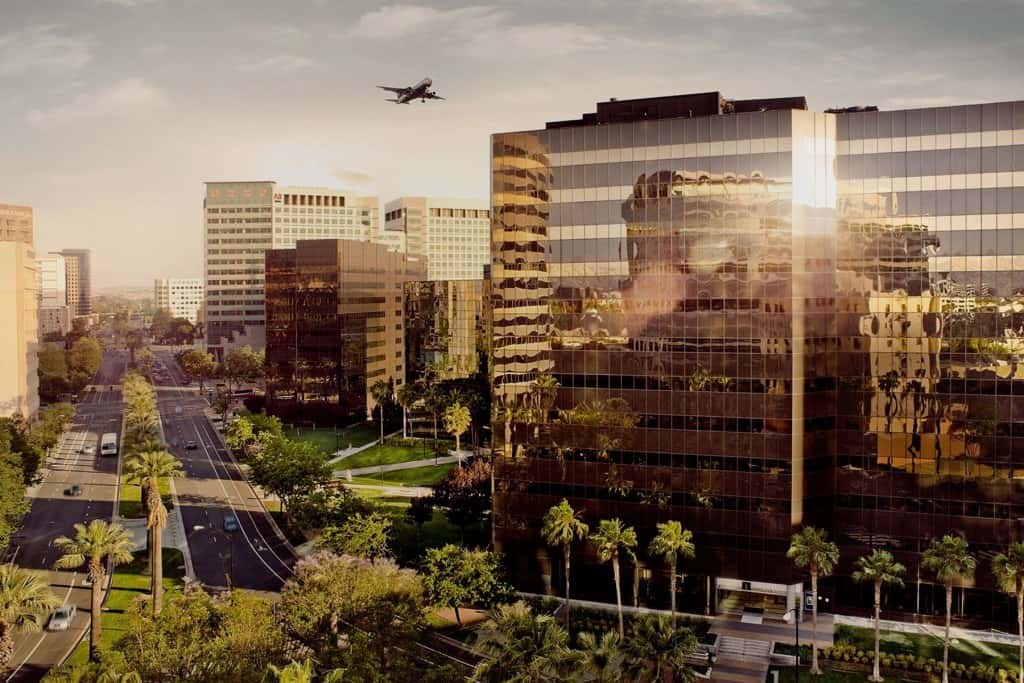San Jose is the largest city in Silicon Valley, home to a world-class roster of companies that have defined our era and irrevocably influenced the global economy. The region is a base for established Fortune 500 businesses while new, innovative startups are fueled by the highest concentration of venture capital in the world. The area offers world-class universities, produces the most U.S. patents, and attracts top talent to usher in the latest cutting-edge technologies.
San Jose is an ideal city for growth-minded leaders who want to build a team of the best salespeople in the country. Indeed, the Milken Institute ranked it as the #1 U.S. metropolitan area where jobs were created and sustained in 2015. The area is prosperous, and its rapid growth presents an ever-changing sales hiring landscape in which companies compete for talent.
Here’s how to successfully hire top salespeople in San Jose, with a look at the region’s sociocultural landscape, local job market, key drivers of economic growth, business challenges, and sales-specific hiring and compensation trends.
San Jose and Silicon Valley: an overview
Silicon Valley refers to a group of cities that were defined by the semiconductor industry of the late 20th century and named for the silicon used to make computer chips. The area is still dense with high-tech engineering and manufacturing companies, but today, it is best known for the internet and software companies that have originated in the area over the last two decades. The established giants and brand-new startups in the area make it the global epicenter of innovation in technology. San Jose is situated at the southernmost point of the Silicon Valley and accounts for most of the area, sprawling over 180 square miles.
Its neighboring cities are impressive and world-renowned in their own right. North from San Jose, on the peninsula that separates the Pacific Ocean from the San Francisco Bay, are a group of cities that includes Cupertino (Apple headquarters), Mountain View (Google headquarters), Menlo Park (Facebook headquarters), and Palo Alto (Stanford University). Palo Alto is also home to Sand Hill Road, the world hub of venture capital firms. San Francisco lies at the very northern point of the peninsula, about an hour and a half’s drive from San Jose — a cultural mecca and hotbed of young companies developing mobile applications, cloud-based software, biotech inventions, social media tools, and more.
These Silicon Valley cities form an interconnected network of suburban residential neighborhoods dotted with commercial areas and small downtowns. Residents commute across borders daily, living and working and playing in the mix of cities that blend to form a world-renowned nexus of tech businesses, startups, and venture capital.
As the largest city in Silicon Valley, San Jose gets the lion’s share of its residents — and companies have taken note. San Jose boasts a population of one million residents and is the tenth largest city in the United States. It’s the largest metro area in northern California (for comparison, Los Angeles and San Diego dominate southern California with populations of four and one and a half million, respectively).
Silicon Valley’s cultural mindset values innovation, tinkering, big bets, and meritocracies, leading to a professional population that embraces risk and late nights in the office in search of big payoffs and products the world has never seen before. It’s also a self-aware culture, with shows like HBO’s hit “Silicon Valley” and Amazon’s “Betas” that parody the slang and archetypical characters of startup life.
San Jose is delightfully diverse, with immigrant populations from all over the world forming the majority of the workforce. It is also one of the most highly educated communities in the nation; over 46% of adults in the area hold a bachelor’s degree and 21% hold a graduate degree (while the national level is 11%). 30,000 students from San Jose State University supply local companies with recruiting opportunities for interns and new grad talent, and over 10,000 new science and engineering graduates come from other top area universities each year, including Stanford, Santa Clara University, and University of California at Berkeley and Santa Cruz. Local sales education programs include business programs from San Jose State, Notre Dame de Namur University, and Stanford’s MBA program. Professional groups and networking sites like Meetup.com give local sales talent ongoing opportunities for education, training, collaboration, and networking.
The Silicon Valley Leadership Group surveyed 218 Silicon Valley CEOs in 2015, and not surprisingly, they cited the entrepreneurial mindset (83%) and access to skilled labor (81%) as the top two reasons for doing business in the area.
Larry N. Gerston, Ph.D., a San Jose State University researcher leading the study, sums it up well: “The Valley’s stellar achievement is not an accident. Brilliant technologists and scientists, innovators, visionary corporate leaders and a 21st-century workforce have produced an environment nurtured by world class universities. Investors have provided incredible support for creative ideas, many of which have become the outputs of booming companies.”
And let’s not forget the quality of life.
San Jose gets an average of 301 days of sunshine per year, with a mean temperature of 60.5 degrees Fahrenheit. It is a lively cultural center with family-friendly arts and entertainment and has a growing young professional population in the downtown area.
The city offers many museums, including the beloved Tech Museum of Innovation and the Children’s Discovery Museum of San Jose. The arts are in full swing with the San Jose Repertory Theater, San Jose Ballet, San Jose Symphony, San Jose Jazz Festival, film festivals, musical theater companies, improv schools, and dance companies. Charming shopping districts like Santana Row are ideal for an evening stroll amid live music, frozen yogurt vendors, and designer shops. The active population partakes in rock climbing, yoga, and mountain biking in nearby hills, while sports stadiums and local hockey and soccer teams attract spectators (and a short drive away, Santa Clara’s Levi’s Stadium hosted the 2016 Super Bowl).
The San Jose International Airport links the city with countries around the world. Locally, residents can commute around the Bay Area with buses, light rails, train, and a planned subway expansion to San Jose connecting it to the rest of the Bay Area. Unfortunately, the transit options haven’t kept up with the economic and population booms, so vehicle traffic is a huge issue for residents. Innovative organizations are testing fixes for this problem, from Bike Share programs in San Jose, to rideshare startups like Uber and Lyft, to Google’s early pilot programs for self-driving cars.
San Jose’s subdivisions
San Jose’s sprawl can be divided into a number of neighborhoods, but for businesses, the city acknowledges three basic divisions: Downtown, North San Jose, and South San Jose.
Downtown San Jose stands out amid Silicon Valley suburbia and is marked by housing high-rises, a growing nightlife scene for young professionals, and many leading companies. Over 100 high-tech firms like Adobe and Oracle have buildings in Downtown alone, joined by top companies outside the tech sector, such as Ernst & Young, Deloitte, PWC, several banks, the San Jose Mercury News, and the U.S. Trademark and Patent Office. Stanley Yang, CEO of NeuroSky, explains why: “Our company has chosen Downtown San Jose, the region’s only urban experience, for its first headquarters. As the creative cultural center of Silicon Valley, Downtown helps recharge today’s top innovators.”
Nearby North San Jose is a growing live-work district spanning 5,700 acres of land, with the highest growth potential for jobs, housing, and office space. The local government boasts the area’s growth potential in terms of employment, employee housing, and office space, and the fact that 20% of residents in North San Jose have a science, technology, engineering, or mathematics (STEM) degree. Stretching to the southernmost tip of Silicon Valley, South San Jose is a spacious residential area with stretching green spaces and parks; some companies are gradually moving to the area for the reverse commute and open space.
San Jose labor market and business landscape
San Jose is the land of opportunity for professionals, and sales talent is no exception. As Patrick Lo, CEO of Netgear in San Jose, puts it: “There is no other place in the world with the concentration of businesses, entrepreneurial energy, financial capital, talent pool of educated employees and government commitment to business development.”
San Jose had the #1 highest job growth rate in the nation in 2014 (4.6%) among United States metropolitan areas with a population of over 1 million people, and ranked #2 in the overall 200 largest metro economies. In 2015 alone, the Silicon Valley area added 58,000 jobs (11,000 more than the previous year); impressive compared with San Francisco, which added 18,000 in the same timeframe. According to the Milken Institute report, professional, scientific, and technical jobs grew 7% in 2014, while and information services jobs grew 23%. Over the past five years, the area added nearly 67,000 jobs in professional services.
A large share of San Jose’s economic boom comes from companies related to high-tech manufacturing for computers, electronic components, semiconductors, networking, telecommunications. The fastest-growing industry, meanwhile, is made up of high-tech services companies that create software and internet products. Other thriving industries include Energy and Cleantech, as well as financial, professional, and venture capital. The high wages and affluence that come along with tech jobs stimulate the local economy, driving housing, services retail stores, restaurants, landscaping, entertainment, healthcare, and more.
Economic growth and job opportunities are driven by large companies and tiny startups alike. Thirty-one Fortune 500 companies are located in the Bay Area; three of them are in San Jose itself, including internet retail giant eBay, Cisco Systems (networking), and Sanmina (semiconductors). In 2015, the metro area hosted 23 initial public offerings and served as a home for 8,600 startups (beating San Francisco, which had 7,400 startups).
The region’s unemployment rate reflects this at 3.9%, compared with the national average of 5.0%, according to the Bureau of Labor Statistics.
What is driving growth?
The city’s population is projected to grow by 40% by 2040. It’s also making plenty of room for business growth — double the room, in fact. San Jose has 100 million square feet of currently-developed office space, and its capacity for office space is 200 million square feet.
Let’s not forget that growth in San Jose and the Silicon Valley are fueled by the highest concentration of venture capital investments in the world.
Venture capital investments reached $9.8 billion in 2015 — the highest level since the year 2000 during the dot-com era. Software companies received more than half of that capital. Patents and research in the area are key to the growth ecosystem and are a great indicator of innovation in the area. One out of every eight patents in the United States originates in San Jose, and registrations hit 17,000 in 2014 — a historical record. And with 8,600 startups based in San Jose, the city hopes to see some of them undergo rocketship growth.
The sheer concentration of companies in the area is a growth driver in itself. Companies move to San Jose to be close to potential customers, competitors, and world-class corporate partners — a key success ingredient for sales teams looking to build deep relationships with prospects and other business development contacts. In addition, much of Silicon Valley’s professional workforce lives in San Jose (it’s the most populous city in the area). Creating San Jose offices gives these employees better work-life balance and shorter commutes.
For these reasons, companies based in other parts of the Bay Area are expanding into North and Downtown San Jose — and tech giants are no exception.
Apple has signed impressive land and building deals in North San Jose that could bring over 10,000 employees into the area. Chad Leiker, vice president at commercial real estate brokerage Kidder Mathews, tells the San Jose Mercury News, “This is really incredible. It is aggressive. It’s a land grab … a major investment in Silicon Valley.”
Meanwhile, rumors circulate about Google scoping out land in the city, which Mayor Sam Liccardo welcomes with open arms. “It’s no secret that a good share of Google’s employees live in San Jose and we would certainly encourage Google’s expansion here,” Mayor Liccardo said. “We can accommodate a great deal of space for Google or other companies in San Jose. We have the advantage of scale. We offer ample room to grow that companies cannot find in some of our smaller neighbors.”
Samsung Electronics currently has its North American headquarters in San Jose, and recently announced plans to nearly triple its city footprint in a state-of-the-art building. “We will make this 1.1 billion square foot building a place of growth, with two thousand local jobs here,” said Dr. O.S. Kwon, CEO of Samsung Electronics.
Even smaller, growing companies headquartered in San Francisco are choosing to open offices in San Jose rather than expanding more of their the existing San Francisco operations. “This office will help our employees balance work and life so they can continue to make our customers successful, while also being a big help with recruiting new employees,” according to Sherry Lowe, the Vice President of corporate marketing at Splunk.
We also see growth activity in San Jose coming from businesses moving in from other countries. SMTC Corporation, a global electronics manufacturing corporation with 1,300 employees worldwide, moved its headquarters from Toronto to San Jose in 2015 to take advantage of the city’s location. “This new direction will better position SMTC Corporation to its investors while continuing to develop new customers globally and serve existing customers with the same world class service levels that we have been known for,” said Sushil Dhiman, the company’s CEO and President.
Sales hiring in San Jose
These businesses, large and small, depend on the best sales executive talent in the world to keep business booming. Demand is strong, and Peak Sales Recruiting has seen steady increases originating in the San Jose area: since 2010, the demand from late stage start-ups in the area to recruit senior-level reps and above has risen more than 15%.
These companies are looking for the best of the best. Sales hiring requirements for Peak Sales Recruiting have concentrated on the following advanced skillsets:
- Successful experience managing and growing an international territory
- Successful experience growing company-wide revenue
- Successful experience increasing profit margin
- Successful experience managing a sales team of 15+ reps
- Successful experience selling enterprise solutions
The local culture breeds top-notch sales teams, and some of San Jose’s top companies are led by CEOs with strong backgrounds in sales. Cisco’s Chuck Robbins, for example, was the Fortune 500 company’s Senior Vice President of Worldwide Field Operations, which includes the sales organization, until he was named CEO in 2015. David G. DeWalt, Chairman and CEO of cyber security giant FireEye, served as Vice President of Sales at Segue Software and Quest Software.
Strong, experienced, pro-sales executive teams that set clear sales objectives and growth targets are one of the primary factors that Silicon Valley’s best salespeople evaluate in prospective employers. And, of course, they assess compensation packages.
Sales salaries in San Jose
Pay levels in the San Jose region are much higher than the national average. According to the Bureau of Labor Statistics, workers in all industries in the San Jose-Santa Clara Metropolitan Area earn an hourly wage about 60% higher than the nationwide average.
Sales positions are no exception. Our data shows that companies requesting support from Peak Sales Recruiting in the San Jose area must offer compensation plans with on-target salaries that are 30% to 35% higher than the national average in order to successfully attract top producers.
Although pay levels for specific positions vary, the tables below provide a glimpse of how much higher sales job wages are in the San Jose area compared to national pay levels using the Bureau of Labor Statistics (BLS) data. Annual wages for all occupations stand at $75,770 for the San Jose area, compared to $47,230 nationally. Sales managers come with a significant premium at $165,570 in San Jose (versus the national average of $126,040) while sales engineers command an average pay of $133,060 in San Jose (versus $104,660).
And, according to our data, sales salaries are rising:
- For senior sales representatives selling software and SaaS solutions, annual base salaries have risen 6.58% ($95,899 to $102,209) since 2014.
- Regional sales managers base salaries have also increased, with top performers earning a base of $125,192, up 5% from 2014.
Business challenges
The economic boom in San Jose comes with challenges for businesses looking to operate in the area and employ top talent. Companies and employees cite ongoing problems like traffic, the high cost of living, and the cost of doing business in a relatively restrictive regulatory environment with high taxes. Indeed, the Silicon Valley Leadership Group’s annual CEO survey found that 90% of the CEOs consider housing costs to be the largest issue for their employees, followed by traffic congestion (63%) and taxes (56%).
The median home price in San Jose was $965,000 in the third quarter of 2015, an increase of 12.2% compared to a year earlier, according to data from the National Association of Realtors. Meanwhile, the national median price for a home in 2014 was $298,100.
California is well known for its high taxes and large number of regulations impacting businesses, like The California Environmental Quality Act. In the 2015 Silicon Valley CEO Survey, 54% of CEOs surveyed think that state legislature is on the wrong track for creating a healthy business climate (while just 18% think it’s doing well). These businesses also ranked their top requests for the local government: invest in traffic relief programs, create affordable home developments, and streamline regulatory and permit approvals.
San Jose officials are aware of these issues, but it remains to be seen whether they can implement changes quickly enough to ease the issues and prevent more of them as the city grows. As San Jose’s vice mayor Rose Herrera said, “The big thinking is more transit; we have to bite the bullet, and spend the money.”
Looking ahead
Opportunities are abound in San Jose for businesses focused on growth, world-class innovation, and hiring top sales talent. The area provides access to a vibrant community of sales and business professionals coming out of the nation’s top universities, amid a culture and legacy of amazing innovation and entrepreneurships. Not to mention the perfect weather.
It’s for these same reasons that companies need to contend with stiff hiring competition from tech giants and hot startups. To build a sales team that will continually hit aggressive growth targets, businesses not only need to offer a salary at or above market rate, but also differentiate themselves with a positive, pro-sales culture and disruptive offerings. They need to show top candidates that sales is a priority, express interest early and consistently, and move the hiring process forward. If companies can keep up, San Jose is the place for business growth stoked by the best sales talent in the world.
relpost-thumb-wrapper
Related posts
close relpost-thumb-wrapper
Latest posts by Ryan Thornton (see all)
- 3 Ways Your Employees Will Sabotage Hitting Year End Targets – December 27, 2023
- 7 Ways to Hit Your Year End Target With Ease – December 20, 2023
- How to Handle Counter Offers — and Win Top Talent – December 18, 2023




